Yara Shahidi Is Determined to Reclaim Black Joy
A few days before I was scheduled to talk with Yara Shahidi, there was a viral moment at a Black Lives Matter protest in Houston. A Black cowboys’ social club had come out to join the marchers, and photos of the group were a rare moment of grace amid all the anger, sadness, fear, and violence. The image of those men and women, sitting high on their horses, walking through the crowds of protesters seemed to me to embody the current conundrum. Is the world ending, or is it only changing? Are we watching the birth of a more just future, or witnessing another losing battle for justice and reconciliation? We can say what we hope for—the rebirth. But we can’t say for certain what will happen. What can anyone say right now?
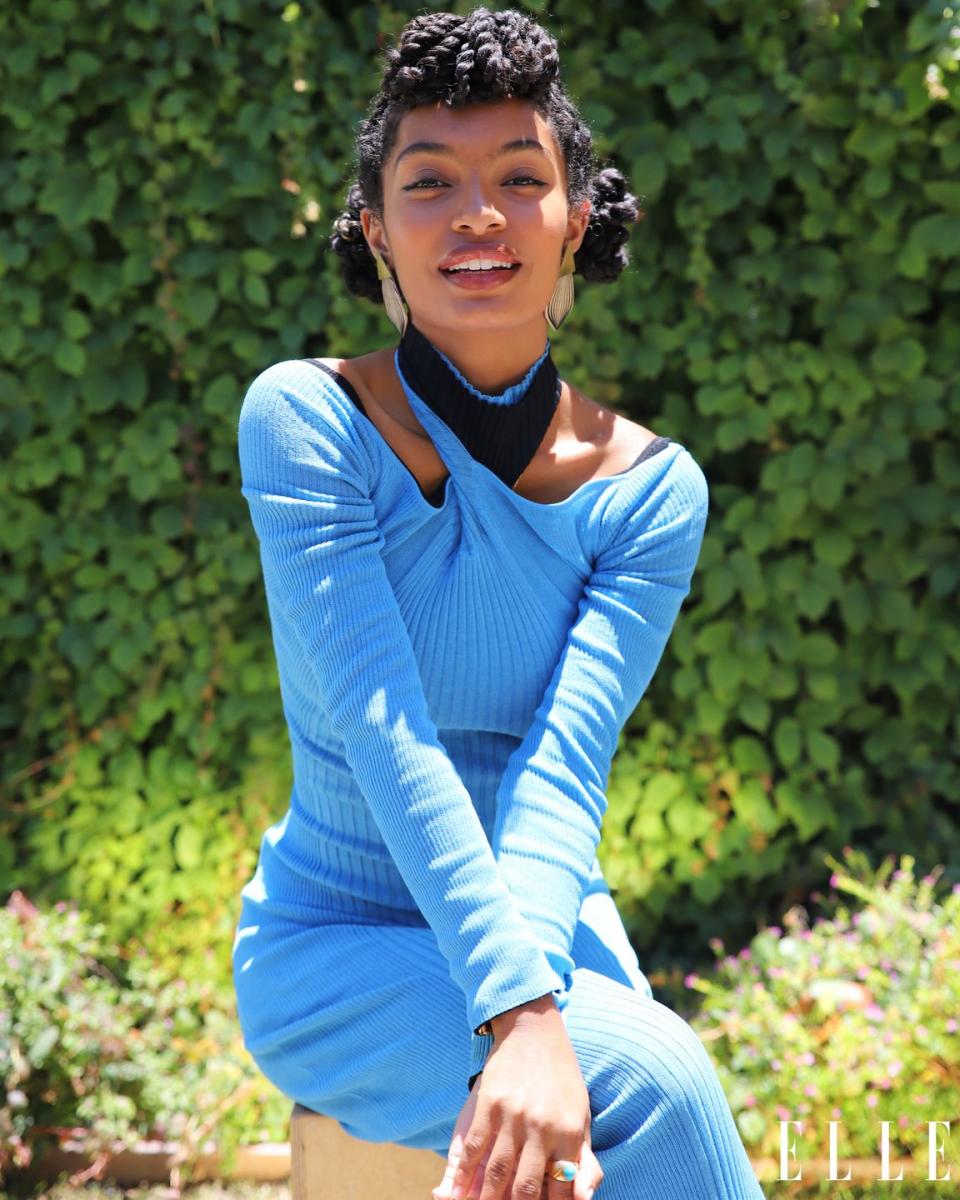
This moment has upended so much, including the regular ecosystem of celebrity spectacle and sound bite. How can any movie premiere or talk show anecdote compete with the incongruous, brilliant, and sad images we are seeing every day on the streets? There are certain things we can clearly say in this moment, “Black lives matter” being the most succinct and obvious. But what that actually means—“How can we create a world where that becomes true?”—that is trickier. On Twitter, many people have been calling for celebrities to speak out, evoking the names of famous Black athletes, musicians, and movie stars and demanding “Where are you?” And just as loud have been the voices saying they didn’t need to hear from anyone. The beauty of this moment of protest is there is no hierarchy here; there is no singular leader. We are all in this conversation at once.
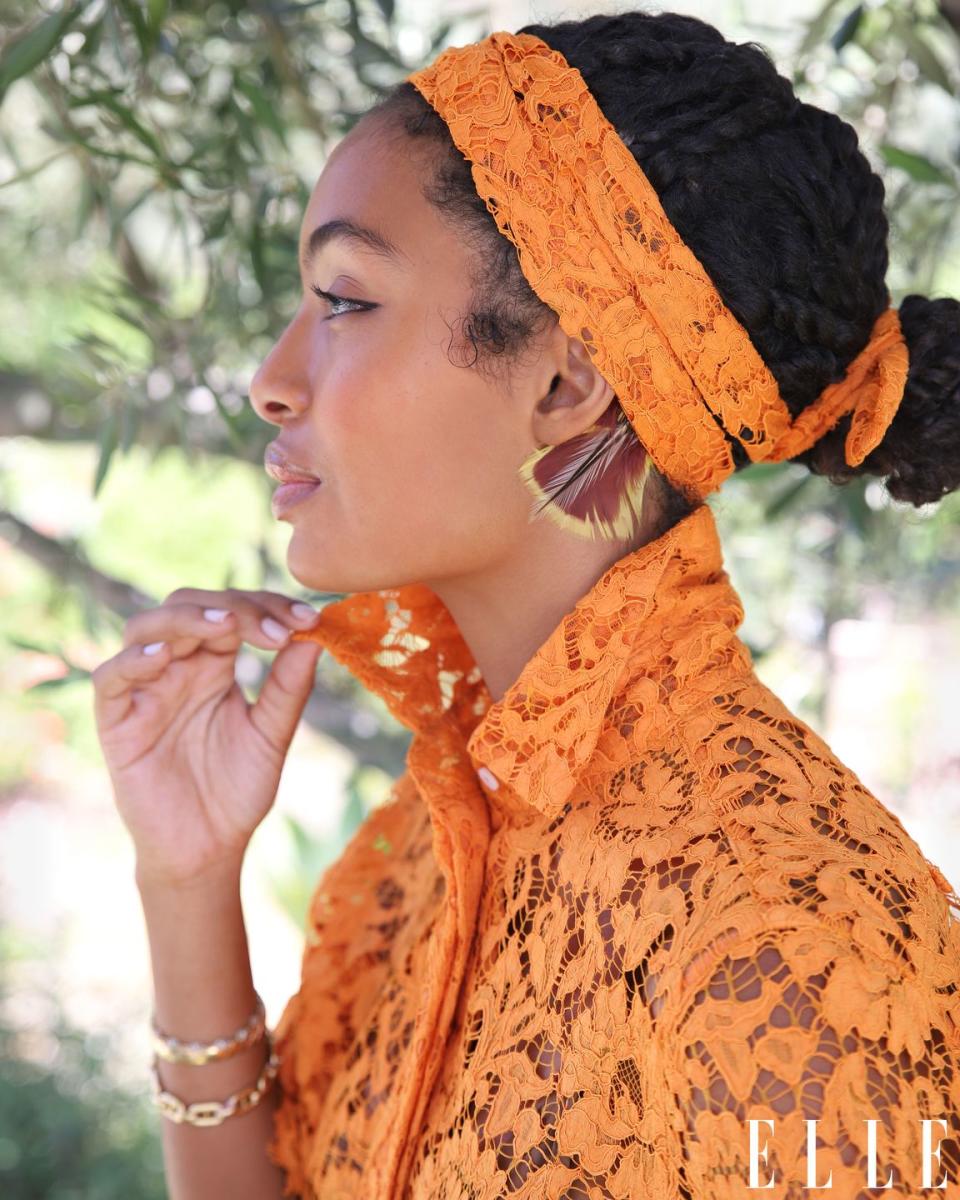
Shahidi gained recognition playing Zoey, the eldest daughter on the series Black-ish, as well as its spin-off, Grown-ish. She has been a part of two shows that positioned themselves as a space to contend with the most difficult questions facing us, with a spirit of humor and love. From the moment Black-ish first aired, Shahidi was commended for her nuanced, well-considered answers to questions about police brutality, race, and class. “At the age of 14, I was asked how I felt about these topics,” she tells me. “If it weren’t for my [role in] media, I don’t know if that is something they would have even asked a 14-year-old.”
Her rise to fame has paralleled the rise of the two defining social movements of our time: Black Lives Matter and #MeToo. She has also become famous at a time when, because of social media, the expectation that celebrities speak out is paramount, even as public conversations around social justice have become increasingly sophisticated. “I feel like a couple of years ago, it became very popular to call everybody an activist,” Shahidi says. Because of her eloquence and her willingness to share resources and education, some pinned that label on her.
“I remember having to clarify time and time again that there are people doing incredible work who should be supported. I choose to be as socially engaged as I possibly can. But when we push people into this activist space, we need to really interrogate what we expect from public figures. And when we’re endowing them with this voice, what is the conversation that we want them to have?”
“When I’m looking at this moment at large,” she adds, “there is this kind of double-edged sword of wanting people to speak up and then [thinking that they’re] not speaking up the right way. It’s something that I’m personally even conflicted about. In this moment, for example, I think a lot of the work that I’m hoping to do is about pointing people toward the organizers and the people on the front lines of this movement, because they have the most prescient, most real, most necessary voices. The greatest skill about having a platform, I think, is handing over the mic.”
But even that approach can have its pitfalls. “It is a tricky moment to figure out on social media,” she says. “Oftentimes, if you don’t post about it, then it didn’t happen. And if you share about it, then it may come off as shallow.”
The question becomes, “What of the work, what of your learning, do you make visible? And what do you keep secret?” It’s an old question in Black organizing, one that predates the current cultural debate over performative activism and that nasty phrase “virtue signaling.” Outside of that argument, made by those for whom fighting for one’s life is new, there is the older struggle, the continual waves of resistance, rebellion, and imagining a better future that we as Black people have engaged in since we were brought here in chains. Within that context, the question of when to make the work visible is one of survival. Imani Perry, a professor of African American studies at Princeton, has described it in this way: “You never tell all the secrets when you’re trying to get free.” Black people did the most radical activism in secret—we had to. The most famous example is the Underground Railroad, but this secrecy continued in a later era of relative freedom, when Black women’s organizations and Black fraternal societies organized in secret to provide mutual aid to our communities. It continued into the civil rights era, when the leaders of our movements were supported by hundreds of local activists throughout the Deep South and Midwest, who hosted them in their homes, transported them in their cars, and gave over their barbershops, restaurants, and business back rooms as places to build the architecture of this coming new world. All that work was done in secret, because to do it in public meant terrorism and death. But also, doing it in secret gave people the space to have long conversations, make mistakes, double back, and build trust.
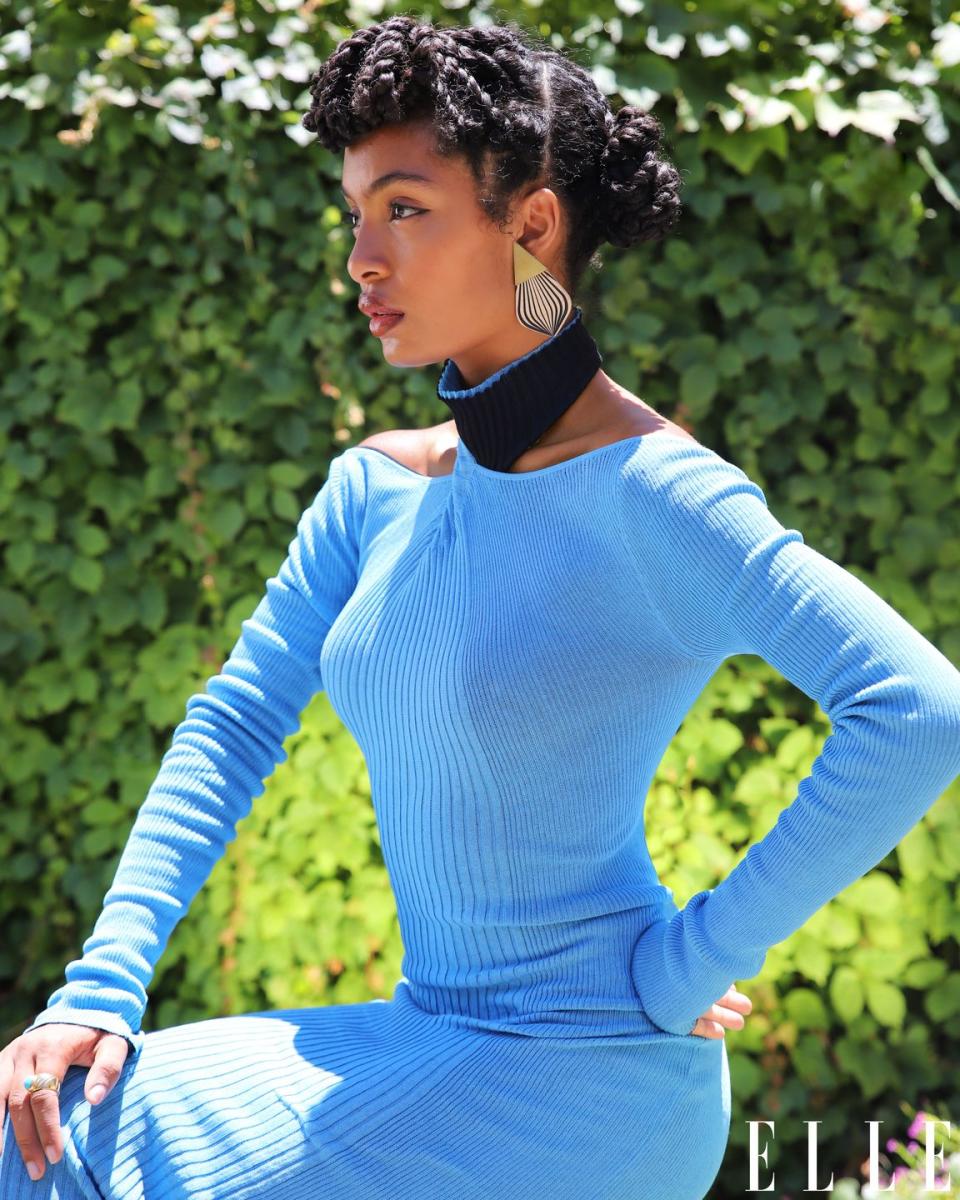
Which is why, for Shahidi, the work continues even after a monumental moment like this. “It’s important to consistently be in conversation in between these [crises] where we have to advocate fervently for Black life,” she says. “We try to have the honest conversation: What is important to make visible? In doing this, we figure out that everything doesn’t need to be shared, but we also discover what could have a lasting impact.”
“I think about my Black and brown communities. I think about my figurative aunties and uncles in this, who supported more nuanced narratives with people and used their platform for good. I think the difference [in the past] was a lot of work was pretty quiet and there wasn’t as much of a public narrative around it, but the work was still being done. And so I think when I stepped into the space of being a series regular on a show, I was already involved in a cast, but also in a larger Black entertainment community that was consistently reckoning with questions like, ‘What is our role on television? What are the obligations we need our networks to make? And what are the environments that we need to live in to consistently make sure that we are responsible with our media?’ I think about so many people that I’m grateful to be in a community with; we may not know at first glance, but I can attest to the fact that they’re doing the work 24/7, 100 percent of the time, with whatever their platform is.”
“Especially in these moments of communal trauma,” she adds, “what has become apparent...is that these moments of trauma aren’t just in these times that are visible. Having to arm oneself consistently with that level of self-protection; not knowing if your peers or colleagues will be there and will support you. Or if they understand microaggressions; if they understand the way that we’re consistently being undermined, both in small and in major ways. In ways that can be an inconvenience, and in ways that can be life-threatening.”
Because of the unrelenting nature of this situation, Shahidi says, “joy is increasingly important to me.... Yes, this is a fight in the face of Black death.” But “there has to be a celebration of Black life. We have to be viewing this moment as a preservation of Black life. A fight for our willingness to thrive, or a fight for our willingness to be happy and unencumbered. A fight for our ability to just be allowed to exist. And so often that’s been taken away. We should be allowed to heal, be allowed to revel in our happiness.”
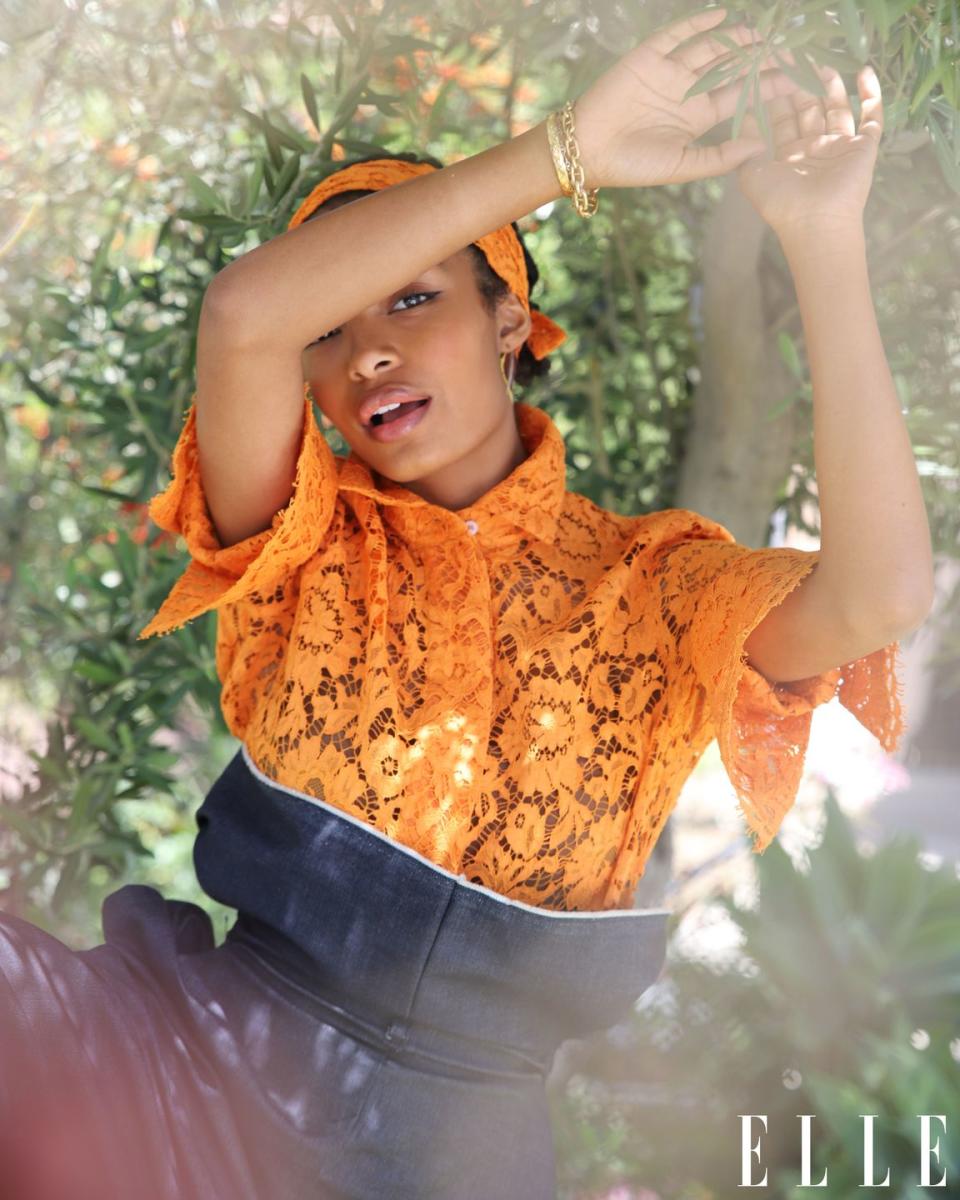
What does this reclamation of Black joy look like to her? “Mentorship. When I think of fashion, for example, I’m grateful to be in a community. My stylist, Jason Bolden, has always prioritized what it means to support Black people in the fashion industry. We’ve consistently been in conversations about how to use this space for something that’s powerful.” Shahidi, a self-proclaimed history nerd, is echoing the work of civil rights activists who used fashion and presentation to dictate their own visual narrative in national media. A point of pleasure—the joy that comes from a well- cut shirt or a beautiful fabric—becomes a statement about who you are and how you take up space. And the space you hope to inhabit must be intentional. “Who are we bringing into these moments?” Shahidi asks. “Who can we open doors for? Who can we be in community with? Joy comes from being able to consistently embrace our sense of community and revel in our culture year-round. We must believe that there is something that we’re fighting for in order to keep fighting.”
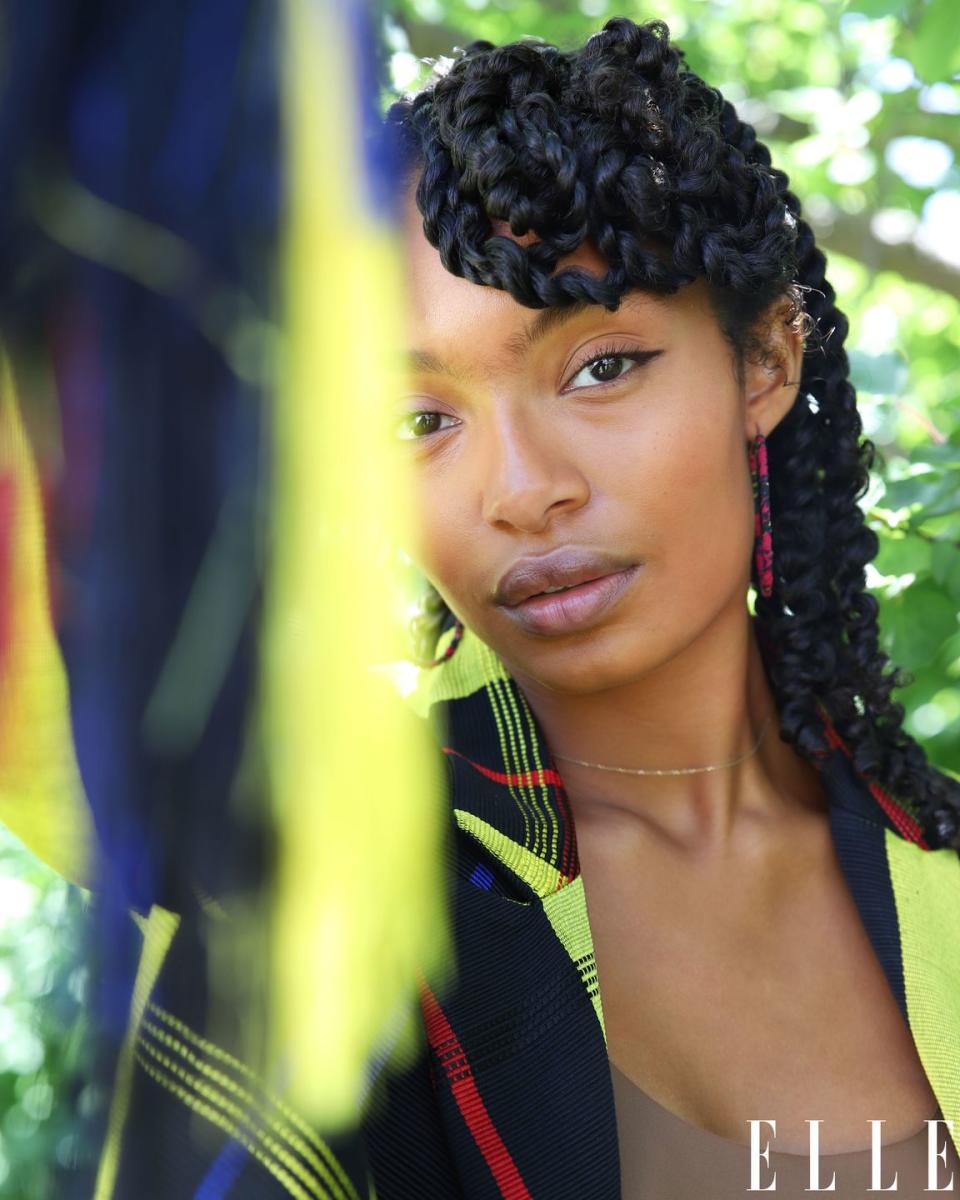
There’s a Lucille Clifton quote that many writers I know have been circulating. She wrote, “You cannot create what you cannot imagine.” And that seems to be why what Shahidi proposes is so fundamental to how we move forward.
“Society tries to take away our ability to imagine,” Shahidi says. “It takes away our ability to participate in a larger collective and nuanced Black imaginary world, because we are consistently burdened with the task of dealing with our reality. There’s very little space to participate in something that is unknown, because there’s so much to handle in our present.” But “we need this imagination and creative force to completely reconstruct our reality. To not only destroy, but to completely reconstruct what the future looks like.”
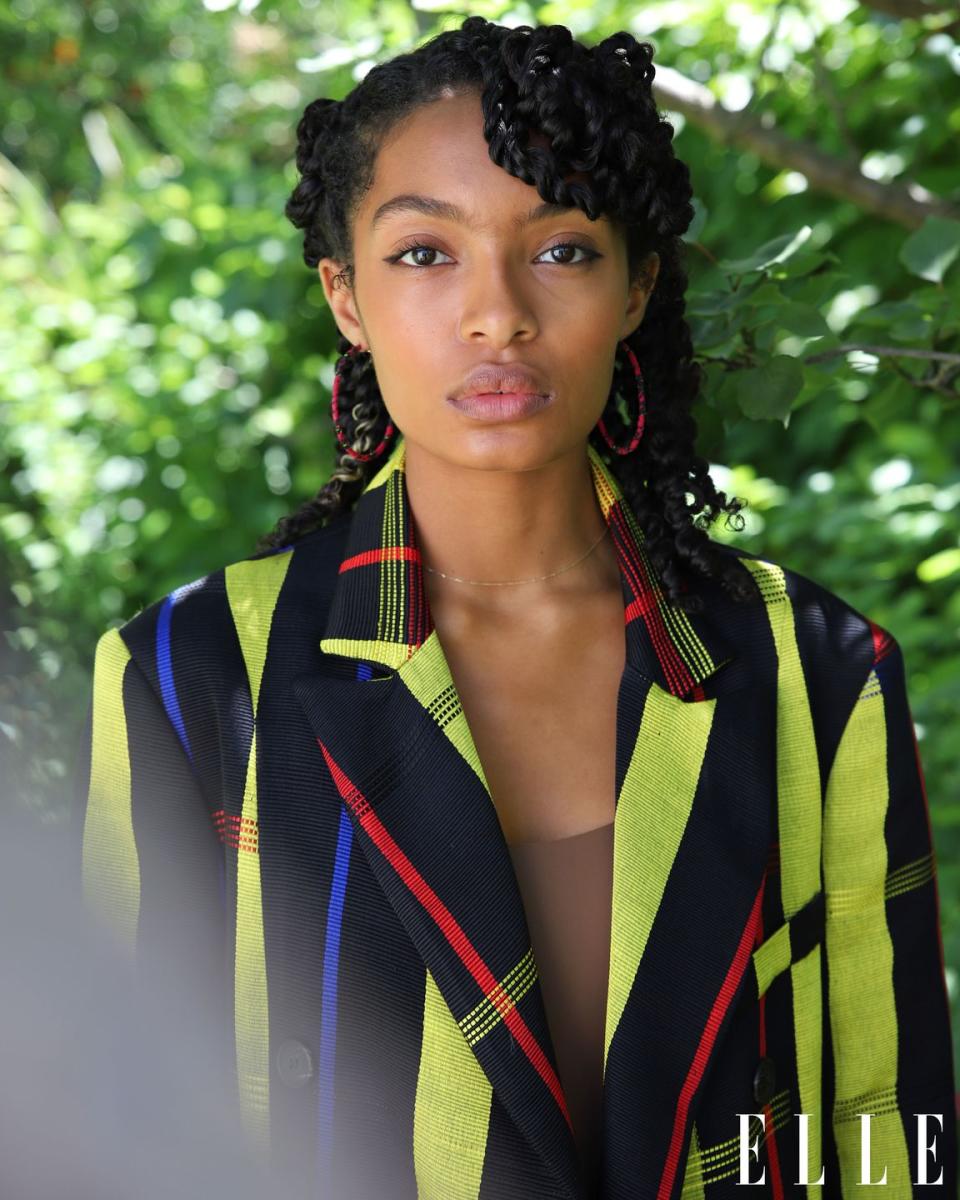
Jeans look: Top, jeans, ankle boots, Heron Preston. Earrings, Tory Burch.
This article appears in the August digital issue of ELLE available on Apple News+ July 27.
You Might Also Like

